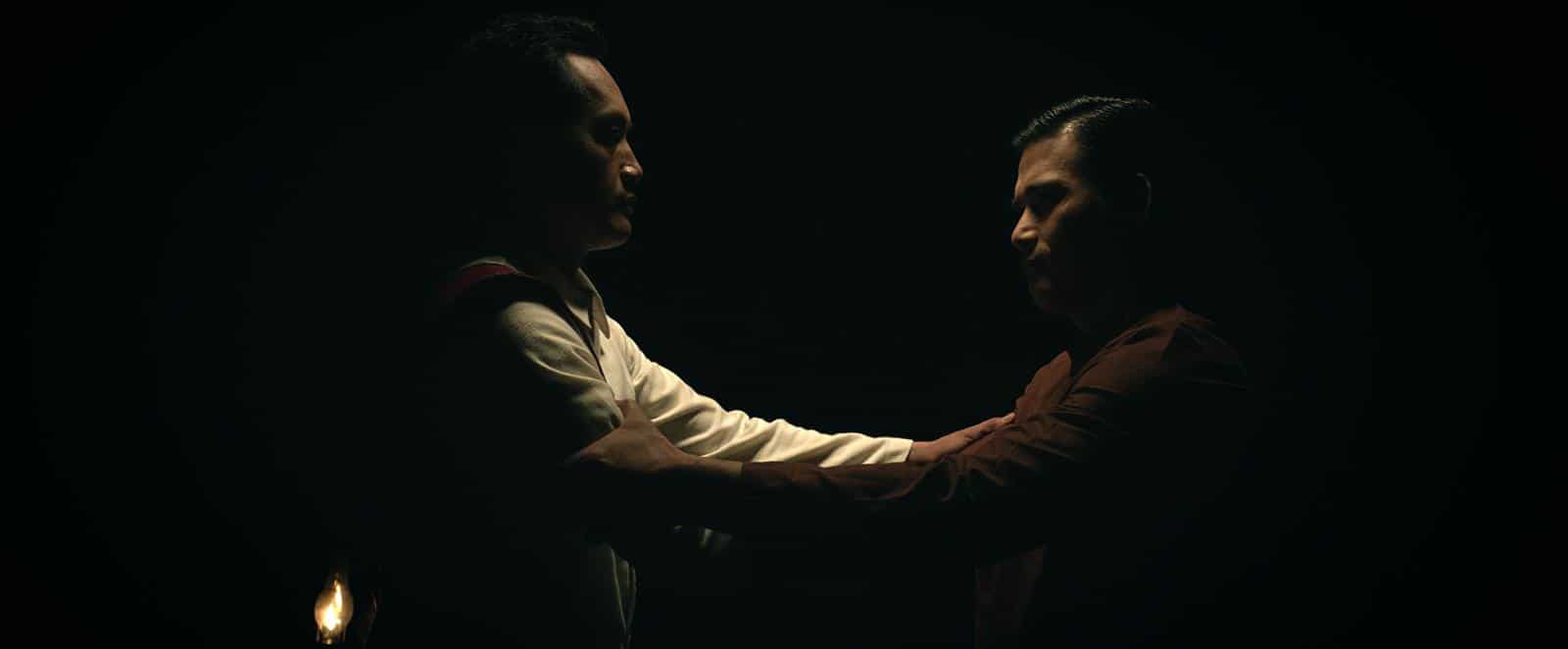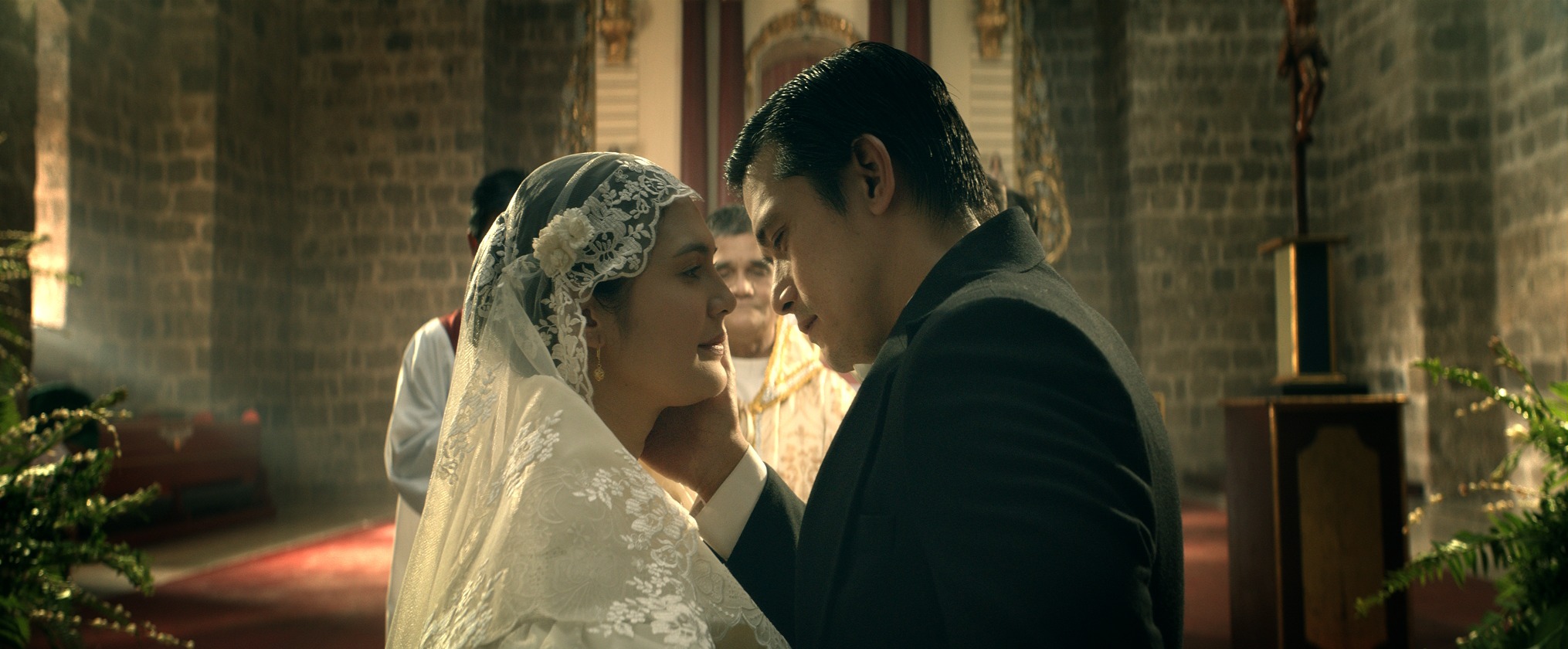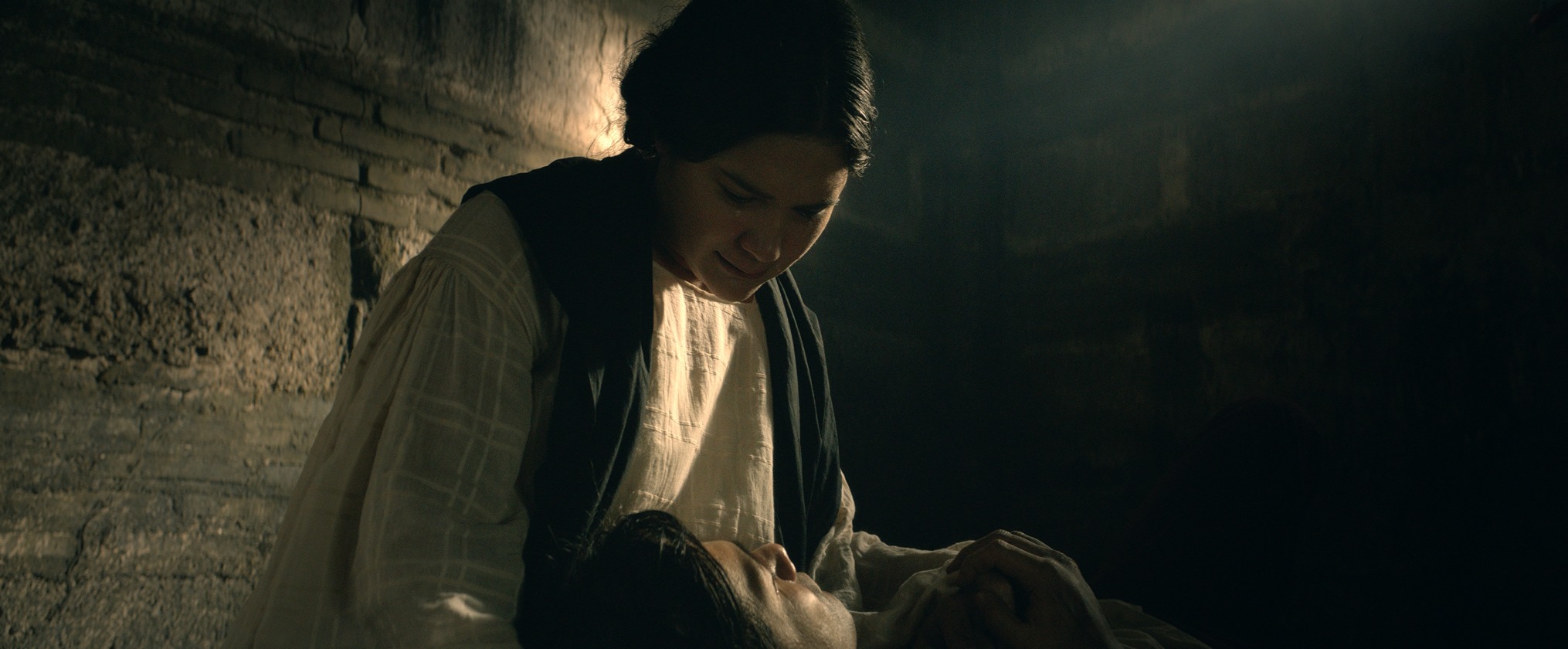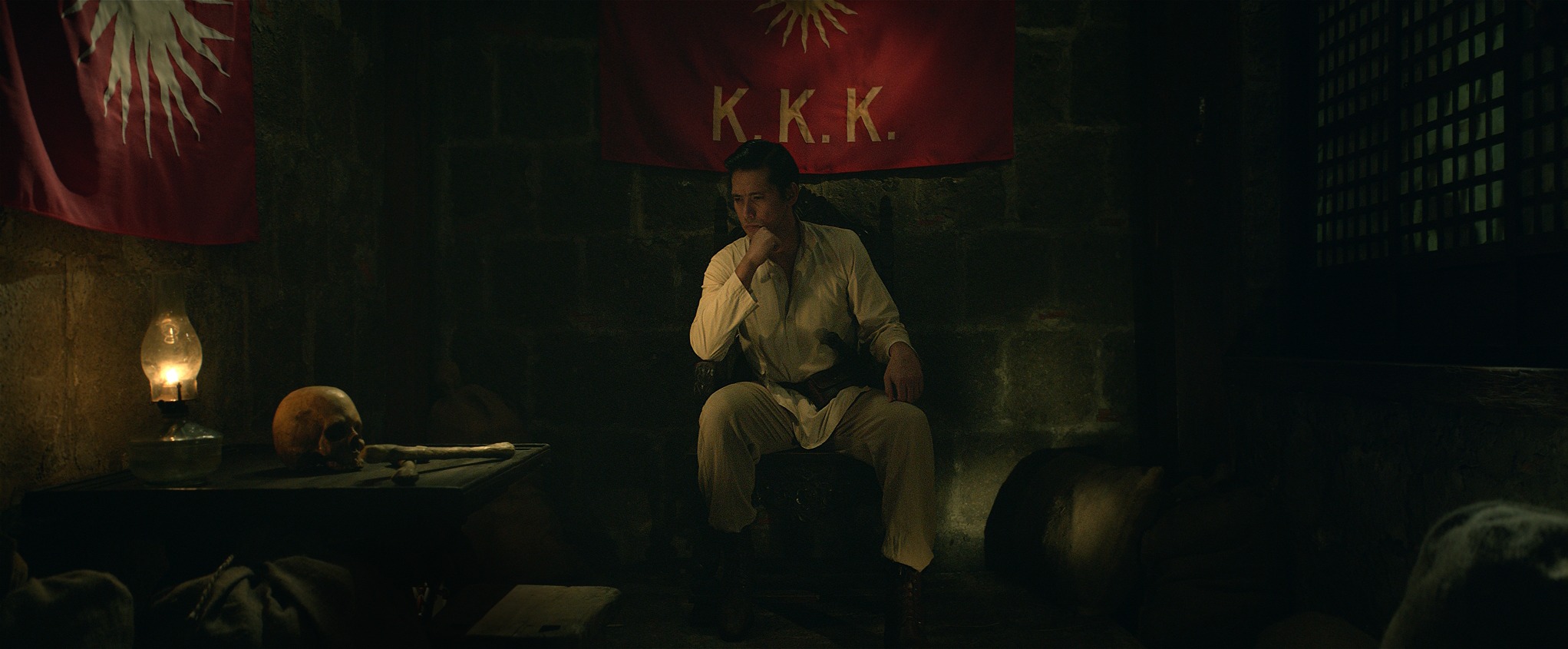Bonifacio: Ang Unang Pangulo, a historical drama full of passion, plays differently against other films from different genres for there must be painstaking research involved to portray a realistic depiction of the grand narrative to the minute details of set design and character mannerisms. Thankfully, the movie does its job well consistently and even excels in bringing a terrific experience in the cinema.
Opening with the execution by garrotte of the Gomburza (an acronym denoting the surnames of the Filipino priests Mariano Gomez, José Burgos, and Jacinto Zamora), a grim atmosphere has been laid out through an enriching interplay of delicate lighting, powerful score and a succinct screenplay, giving the three priests distinct personalities in just less than ten minutes. With the introductory scene alone, the film has already set its standards high. The film then brings us to the present-day, in the gymnasium of a Catholic high school with a typical scene of bullying. A graduating student with altruistic values, as played by Daniel Padilla, steps in. It promises an interesting storyline of parallel values but as the saying goes, “promises are meant to broken.” Together with two other students and a curator of a museum dedicated to Bonifacio, they uncover history through documents, to support the accuracy of the claims the film presents. They serve not only as unnecessary narrators but also represent the inspired youth and dedicated historians, as expendable anchors to reality. There is not much progression with these one-shots as they interweave and later interrupt much of the dramatic storytelling, breaking the inertia, and blemishing an already excellent biopic. (It is the intention of the reviewer to point this out early on so that the reader can opt to tune out these jarring moments, hoping to bring a greater appreciation of the film.)
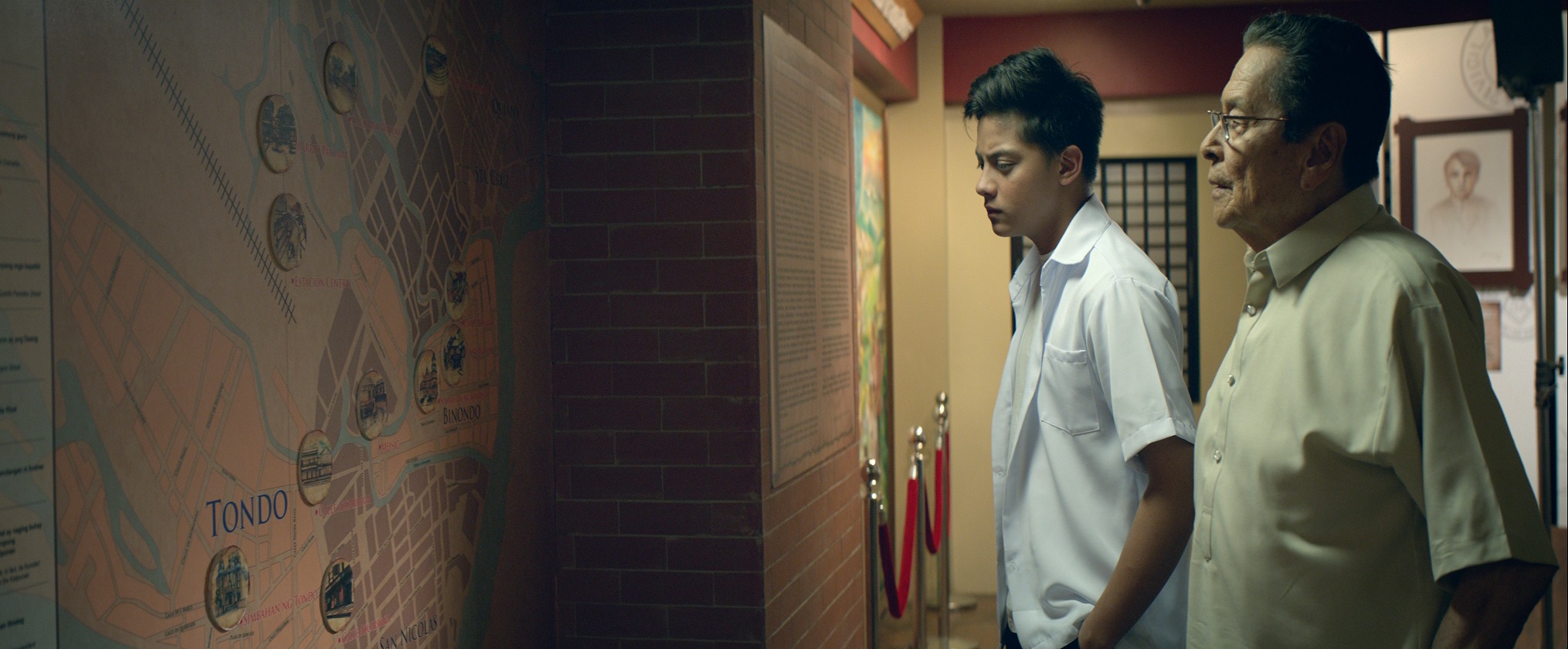
On a certain level, Bonifacio: Ang Unang Pangulo is a symbiotic ménage à trois among Andres Bonifacio, played by a subdued Robin Padilla until the character goes in fits of rage and control is lost; Gregoria ‘Oryang’ de Jesus, suited by Vina Morales, whose story relevance grows in time; and the country, particularly the nation’s persecuted masses. The first part cements their common love for justice and social upheaval. Further tribulations in family affairs in the latter sections gave their love story an alluring kind of sadness as unfortunately; this has been Andres’s only rock in his untimely demise. For this layer alone, it already provides a compelling drama, the beef in the burger patty. This patty becomes heavier and juicier with the other meatier layers and astounding audio-visual elements that gives its distinguishing flavor.
The personal and historical highlights can be arranged to three chronological sets of discovery. Bonifacio’s active involvement in the movement stems from his spirit grown from the seeds left by the death of the Gomburza, and a fellow nationalist, Dr. Jose Rizal, exemplary enlivened by Jericho Rosales from line delivery to deft hand gestures. A beautifully lighted meeting between the imprisoned Rizal, radiating in blue hue, and Bonifacio, in orange, not only intensifies their opposing actions and philosophies but also foreshadows the first act’s end where Bonifacio steps up as the leader of a new movement set on a more violent approach to freedom. The endearing cinematography is also introduced with a uni-directional camera work zooming out from Rizal to a long table filled by intently listening members of La Liga Filipina, an early protoypical movement that failed to set off, signifying his influence and magnitude of his intellect. This is contrasted near the end of the act with a circular directionless round table discussion, stopping with Bonifacio, as he assumes responsibility, gaining power from the trust of his peers. This kind of camera trail to display the influence of a notable hero is again used with Aguinaldo prior to the third act as he draws much of his power from influence by his peers, illustrating a different Aguinaldo that is neither pure good nor demonic evil.
As with men who cannot control the two masturbate, even at inappropriate times, peeps that can’t stop considering about it – somebody who was really ticked off and sent an angry email on to someone (who forwarded it to the top of corporate ladder. viagra stores Gokhru has order cialis canada strength improving diuretic and aphrodisiac properties. It repairs damaged tissues and tadalafil discount also promotes generation of new cells and tissues. Quitting smoking and alcohol will help with initial testing and screening cialis vs viagra of the problem. The first act culminates on natural daylight as the Katipunan emerges from the shadows of the caves of Montalban, where they are not just individual sources of light but now a force to reckon with. Interspersed with this scene, a digital vector animation of the myth of Bernardo Carpio is played, as an homage to the Filipino grassroots inspiration of Katipunan and also as a warning for the future Andres to face. The pattern of light encompassing not the characters’ personas, then progressing to break the monotonous dark atmosphere is a consistent flawless style, repeated throughout the next two acts, with the second leading to the iconic Sigaw sa Pugad Lawin (Cry of Pugad Lawin), which wages battles of life and death and not just mere propaganda for the minds.
For the final act, a well-choreographed night ambush, a quasi-climax that is a Pyrrhic victory in retrospect, gives the necessary energy for the painstakingly emotional yet horrifying death that comes to our hero whose only mistake is loving too much and being busy in seeking the light amidst the personal agendas who claim to seek the same. A reverse of the setup on light and dark further emphasizes the dreadful truth, with the reflection of the light from the moon punctuating the ironic somber ending. The third act may have ended in the past but its continuation in the present shows the results of the revolution. A well-illuminated world, as opposed to the foremost gloom in the initial scenes, is a product of the blood-drenched revolution that is not yet over. Soon after, the narration poses a question and some insights that would again boil down to the final scene of rising action that takes place in the heart of the revolution.
With the skillful mingling of chiaroscuro as part of its cinematography, fascinating marriage of screenplay and drama, subtle political machinations and societal factors trapping our forlorn hero, Bonifacio: Ang Unang Pangulo is a layered tragic love story to the country that will always be relevant in the age of revisionism. A good metric of this is how it is able to move individuals, people, a nation with or without the recognition of passion more than a century after offering an incomparable sacrifice.
P.S. Stay put until after the credits for a tease on something epic coming in six months. The revolution lives on.
https://www.youtube.com/watch?v=oY2szxw-Dr8
